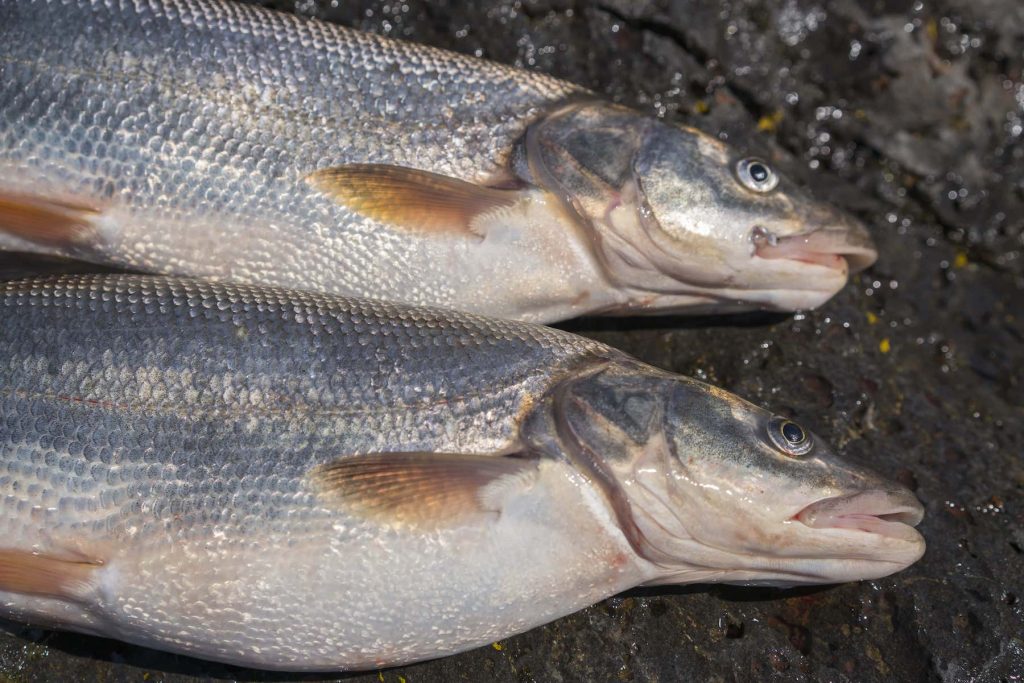
Down Year, But Pikeminnow Sport-reward Fishery Meets Goal Again
The annual pikeminnow fishery on the Columbia and Snake wrapped up this past Sunday and managers are reporting a down year for the program that pays anglers to catch and remove the salmonid smolt eaters, though there are silver linings.
The 89,537 qualifying fish turned in at stations from Cathlamet to the mouth of Hells Canyon was the fewest on record back to the program’s beginning in the early 1990s, and the effort of 11,543 was also the lowest.

“Fortunately, despite the down year in harvest, the Pikeminnow Program achieved it’s 10 to 20 percent exploitation goal again, as it has for every year since 1998,” said manager Eric Winther.
Meeting that mark for the pikeminnow population is believed to reduce predation on young Chinook, coho, steelhead and other salmonids in the two rivers by up to 40 percent.
Winther said anglers also enjoyed decent success this season – the catch per unit of effort of 7.8 was among the highest on record – but low effort and harvest worried him from the May 1 start of the fishery.
“We tried to address some of that by considering adjustments to the reward structure, as we have done in past years, but some logistical issues with our pikeminnow payment mechanism could not be overcome,” he said.
Anglers are paid $5 to $8 per 9-plus-inch fish, depending on how many they’ve turned in, plus $500 for specially tagged ones.
Season at select stations was also extended two and a half weeks after the usual September 30 wrap-up, the timing coinciding with some of the year’s best catch rates.
“In the end, with the costs of everything – fuel, bait, tackle, etc. – going up, and with the various disincentives for working or earning money, like enhanced unemployment, anglers indicated to me that they found participating less worthwhile in 2021,” Winther said.
Boyer Park on the Snake near Pullman was again the top station with 17,082 pikeminnows turned in, followed by The Dalles at 10,047. Top CPUE for a full-season station was Washougal at 17.8.
“On the other hand, many top anglers liked having less competition this year and their yearly totals increased from last year,” Winther added.
Indeed, 2021’s top fisherman made $58,329 for their 6,850 fish, the highest payout since 2018’s season and more than $10,000 better than last year, though 2020 also saw an 10-day-delayed start to the season due to Governor Inslee’s Covid-related fishing and hunting halt.
Program funding comes from the Bonneville Power Administration. The federal dams on both the Columbia and lower Snake Rivers enhanced the ability of the native northern pikeminnows to prey on outmigrating salmon and steelhead smolts swimming through the hydropower system’s still waters.
They’re not the only fish chewing on baby Chinook, coho and steelhead. The program’s 2020 annual report notes that testing in the Bonneville area found salmonids in the stomachs of walleye most frequently – though relatively few were sampled – followed by smallmouth bass and then pikeminnows.
Full disclosure, the program is a Northwest Sportsman advertiser.
This year’s harvest of nearly 90,000 pikeminnows was more than 12,000 fish fewer than 2020, the previous low mark back to the program’s 1991 inception. The record high stands at 267,894 in 2004.
Effort was also 4,300 lower than last year, which was the lowest until 2021.
“We will, of course, be considering adjustments to the reward structure for 2022 as we analyze our fishery data from 2021 and would update the Pikeminnow website and Facebook page if/when any details are finalized,” says Winther.
Overall, nearly 5.3 million pikeminnows have been removed from the Columbia and Snake in the program’s 31 years.
It’s not the only program in the watershed that pays anglers to fish. The Colville Tribes offers $10 for the heads of northern pike – an unrelated invasive species – caught in Lake Roosevelt, the Kettle River, Rufus Woods Lake and the Wells Pool.
